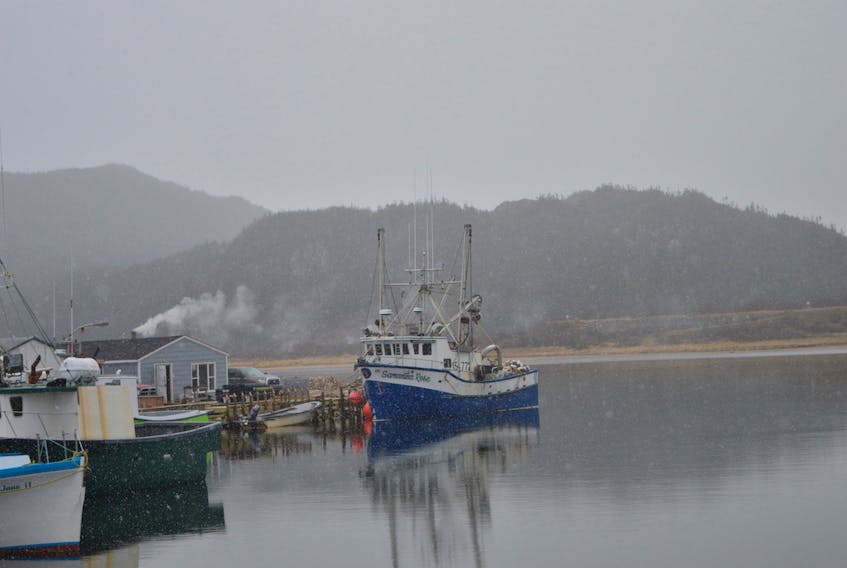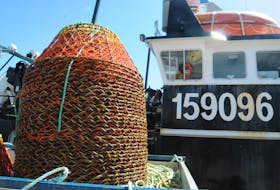ROBERT'S ARM, N.L. — The Fish, Food and Allied Workers-Unifor (FFAW-Unifor) union is hoping to see the recent decision around a Japanese turbot quota overturned.
FFAW-Unifor president Keith Sullivan says the new 150-tonne quota that will be fished within the 200-mile limit for Canadian waters sets a bad precedent for inshore harvesters of the province.

“The Canadian government should look at ways of getting more turbot for Canadian harvesters rather than bringing a Japanese quota into our protected 200-mile zone,” Sullivan said.
“We’re hoping (federal Fisheries Minister Jonathan Wilkinson) will reconsider the decision."
The deal negotiated between the Atlantic Groundfish Council (AGC) and the Japanese Overseas Fishing Association includes a quota trade of several hundreds of tonnes of redfish and yellowtail from Canada to Japan in exchange for 150 tonnes of turbot now within Canadian waters. The current deal is only in place for 2019.
While the union has stirred a strong negative reaction to the quota trade, AGC president Bruce Chapman says their reaction is misleading people to the actual facts of the deal.
“The turbot will not be fished by Japan, it will be fished by Canadians,” Chapman said in an emailed response. “The Japanese quota will be transferred to a Canadian vessel for this year, and will be fished by that vessel… by a primarily Newfoundland and Labrador crew.
“This is a quota that would typically be fished by Japan for the benefit of Japan, and will instead this year be fished by Canadians for the benefit of Canadians.”
However, Sullivan says that a Canadian flag may be on the vessel that catches this quota, but it will still create negative consequences for the inshore turbot fishery.
“It may be a Canadian vessel that will do the catching but it is still Japanese product being transferred to the exact same grounds where our inshore harvesters are fishing and trying to make a living,” he said. “It could have a major impact and cost to fishermen if it causes lower catch rates for them.”
Future effects
Sullivan is also worried that if this decision is not fought against, it may make it easier for more foreign quotas to be brought into Canadian waters.

“This decision sets a precedent that allows foreign fleets to find the backdoor into Canada’s jurisdiction, where inshore harvesters have continually had fishing rights and opportunities removed,” he said. “A bigger concern is what happens next year if the Canadian government rubber stamps a deal for a Japanese or European-owned corporation to transfer 1,000 tonnes of turbot into Canadian waters.”
Robert’s Arm harvester Trevor Jones agrees this decision may set a precedent for future decisions if the FFAW and harvesters do not fight against it.
Newfoundland and Labrador’s inshore turbot fishery is currently struggling to keep up high membership due to low quotas and low daily catch limits. Due to the extensive distances that often have to be travelled to catch turbot, Jones says at a time when higher quota is what their fishery needs most, it is upsetting the Canadian government has approved this deal.
“I was very disappointed,” Jones said. “Knowing that so many inshore harvesters would love to have more quota and now this foreign quota is allowed into the grounds we fish.”
Sarah Fleming, director of communications with the AGC, says it is possible the final product from this turbot quota will end up in the Asian market, but it will be processed on the vessel, landed at a local port and sold through a Canadian distribution network. The Japanese association will play no direct role in where this turbot quota will ultimately be sold.
Details about the Canadian vessel that will be fishing the quota could not be provided by deadline.
Similar deals
According to Chapman, this ability to make temporary quota trades is a regular feature of the global fishing industry. He says FFAW-Unifor is capable of making similar deals for its members, but it does not take advantage of the opportunity.
“The FFAW has the same ability to make trades on behalf of inshore harvesters to get temporary access to more quotas for its members,” said Chapman. “The organization chooses not to do this and instead lobbies to take quota away from fellow Canadians for free.”
The federal Department of Fisheries and Oceans(DFO) was also reached for comment but did not respond by deadline.
[email protected]









